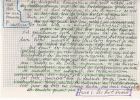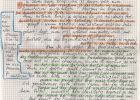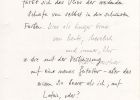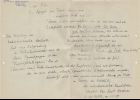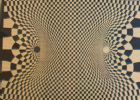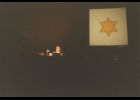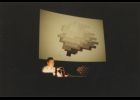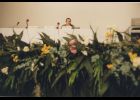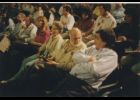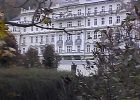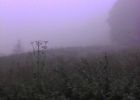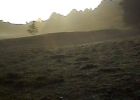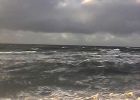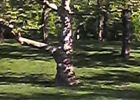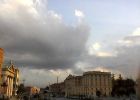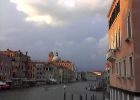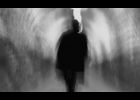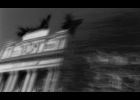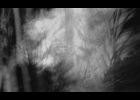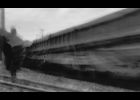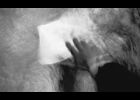Reflexões sobre “A Casa da Cor à construir em S. Paulo” / Casa da Cor, (reflexões complementares) / Mesa redonda / A cor no mundo pos-moderno / Codigo de cores / Video palestra / Casa da Cor, S. Paulo / In search of a colour code / Why the house of ...
In the two years (1987-1989) in which Flusser collaborated in the project of the Casa da Cor he wrote a series of texts, held conferences, and made several video interviews that have been transcribed. Flusser discussed the House of colour from two distinct but complementary and converging perspectives: the new house to be built and the necessity of a new colour code. In the mid-1980s, Flusser formulated the notion of an all-encompassing convergence of cultural and technical codes. In the context of the project of the House of Colour, he reformulated this vision including colour.
Letters / Postmoderne Farben
Although Flusser met Gottfried Jäger in 1984, the dialogue between them began with a short letter from Flusser to Jäger on March 4, 1988, presenting the project of the Casa da Cor. The letter is accompanied by the essay „Postmoderne Farben” which Flusser dedicated to Jäger, possibly to lure him into a collaboration. Jäger held a speech on autonomous colour on the second day of the 1989 conference (August 23) in São Paulo.
Letters / Farben statt Formen / Coloration replacing formalisation / Farben verschlüsseln / Karl Gerstner / Vilém Flusser und die Farben
Vilém Flusser and Karl Gerstner got to know each other in February 1987 at the 2nd Latin American Seminar on Alternatives for the teaching of the history of science and technology. Their letter exchange covers a period of about two years (1987-1989). Flusser and Gerstner were united by an intellectual and emotional friendship, read each other’s works, and dedicated a very personal text to one another: “Karl Gerstner” and “Vilém Flusser und die Farben” published in 1992 after Flusser‘s death. Flusser wrote two other texts “Farben verschlüsseln“ and “Farben statt Formen“, together with its English version „Coloration replacing formalisation“ in early 1988, as a discussion proposal for Gerstner. He dedicated “Farben verschlüsseln“ to Gerstner and sent the text with a letter, dated March 4, 1988. While Flusser wrote all his texts with a typewriter, Gerstner’s letters are practically all handwritten and in some cases in colour. To emphasize this difference the letters have been published separately and in different formats: Flusser’s letters are PDF-files and Gerstner’s JPEG and JPG-files.
Colorarium: The Exchange of Letters between Vilém Flusser, Karl Gerstner, Philippe Henry and Gottfried Jäger
This essay is about the relationship and collaboration between Vilém Flusser, Karl Gerstner, Philippe Henry, and Gottfried Jäger and the way this impacted the project of the House of Colour in São Paulo between 1987 and 1989. In this period, Flusser exchanged numerous letters and texts with his three correspondents, continuously re-elaborating and expanding his ideas about colour and their specific role in the project. This communication process was naturally enough multilingual. Flusser used English, German and Portuguese interspersed with French. Jäger wrote his texts in German, Gerstner in German and English, and Henry used Portuguese and French. The plurality of idioms is echoed in the use of different media. Besides forms of written communication (letters, essays, telegrams), video interviews were done in Robion, which were viewed and commented upon in Brazil. Henry conveyed the questions by phone and Flusser reacted in written form. Gerstner and Flusser wrote several texts together. Flusser travelled three times to Brazil, visited Gerstner in Basel and Hippoltskirch and Jäger in Bielefeld. Both Gerstner and Jäger came to see him in Robion. Henry travelled several times to Robion, and also met Gerstner and Jäger. All this ensured a constant flow of back-and-forth information within the small network of friends.
Colourful Dialogue: Vilém Flusser, Karl Gerstner and the Casa da Cor
Casa da Cor connected Vilém Flusser with an important interlocutor: Karl Gerstner. Gerstner’s systems-based approach was laid out in his book Designing Programmes: Instead of Solutions for Problems, Programmes for Solutions (1964). He was involved in New Tendencies, the 1960s Zagreb-based group that saw research and the computer as a medium for artistic innovation, and he was included in landmark exhibitions like The Responsive Eye (1965) at the Museum of Modern Art in New York and documenta 4 (1968). Flusser and Gerstner discussed developing a denotative color code and creating a three-dimensional color space, called Colorarium, that would follow precedents like Kandinsky’s The Yellow Sound, composer Ivan Wyschengradsky’s audition colorée, or Le Corbusier’s Poème électronique (1958), as well as Gerstner’s earlier environments made with televisions, Plexiglass spheres, and acrylic-on-polyester reliefs. Neither the Colorarium nor the color code were realized, but they were theorized in Flusser’s writings: “On Science III” (1988) in Artforum mentioned Casa da Cor and asked, “Could a color code become a sort of universal Esperanto, complementing or even substituting for spoken and written language?”
Transparente Gegensätze – Logische Auflockerungen. Von den Abenteuern eines Bild-Ingenieurs und poetischen Konstruktivisten
Karl Gerstner’s work is above all about visibility (Sichtbarkeit) and conceivability (Denkbarkeit). It makes something unprecedented appear. In this context, colours play an essential role. Gerstner’s works are of great clarity and severity, they are inspired by a constant pursuit of abstraction punctuated with flashes of freedom. Both Vilém Flusser and Karl Gerstner were influenced by the thinking of Jean Gebser and his notion of a-perspectivity and transparency – diaphaneity in Gebser’s terminology.
L’irruption du téchno-imaginaire / A. Bonnier Cor de Rosa / O negro será de cor? / Preto e branco / O preto é belo / Schwarz ist schön / Ecologia multicolorida? / Vom Umfärben der Grünen / Bunte Tiere / Disney Land Colors
This selection of texts, which date from the early 1970s to the late 1980s, documents Flusser’s interest in colour over nearly twenty years. Besides the connection of black and white in photography and discourses on “racial” differences, the role of greyness and its relationship to colour luminosity in the description of culture and politics, the presence of colour in nature, landscape, and the animal world, Flusser also used colour to redefine the notion of technical image.
Small Data Photography. Mit weniger Daten mehr erfahren
Everybody is snapshooting, everywhere. Flusser’s statement in his Toward a Philosophy of Photography from 1983 is even more significant forty years later in our brave new world of smartphone pictures. Is it possible to overcome the abundant redundancy of digital colour photography by using the same device, a mobile phone? In her experiments against the apparatus Vera Schwamborn developed what she calls „Small Data Photography“ as an answer. It is amazing that 480 x 640 pixel image on a small Nokia mobile can result in irritating and informative photographs opening a path to regain the world around us by small data. Flusser tried to combine aesthetics and technology as a way to bring back sensual experience into our abstract environment of calculus and computation. Together with Karl Gerstner he developed ideas of a colour code parallel to the all-embracing number codes of our time. Small Data photos also offer a reconciliation. They disclose a world of images that lie before the text and beyond the number.

